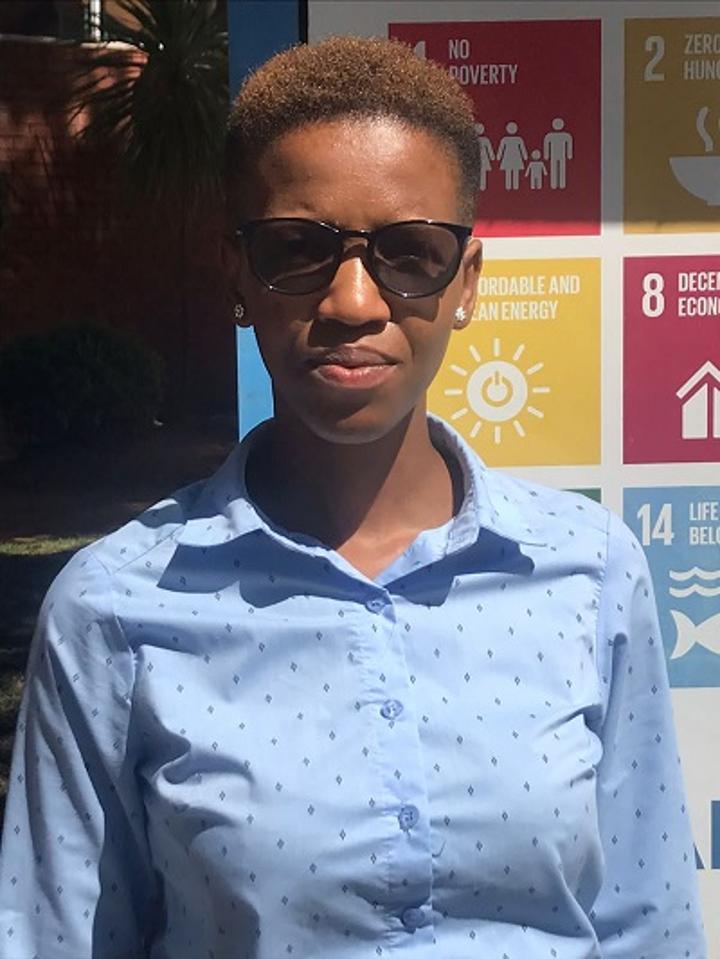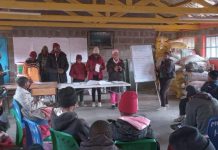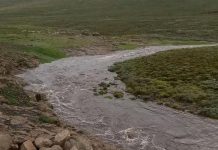Africa-Press – Lesotho. Despite Lesotho boasting abundant water and thus being known as the water tower for Africa, most of its communities struggle to get water due to, among other issues, extreme climatic factors and human activities.
On October 5th this year, World Meteorological Organization (WMO) released a report at Geneva on the State of Climate Services (Water), which states that water-related hazards like floods and droughts are increasing
because of climate change and that the number of people suffering water stress is expected to soar, exacerbated by population increase and decreasing availability of water.
WMO Secretary-General Professor Petteri Taalas disclosed that lack of water continues to be a major concern for many nations, especially in Africa. He said; “More than two billion people live in water-stressed countries
and suffer lack of access. The situation is worsened by the fact that only 0.5% of water on Earth is useable. ” In order to get a glimpse of how water scarcity is affecting
communities in Lesotho, Informative Newspaper had an interview with ‘Malethoele Lekarapa from Malimong Ha Motsieloa in Berea, who said at her village, they used to get water from a spring next to her house but
the spring has since tried up and they now fetch it from the nearest village tank which takes about 30 minutes to reach. Lekarapa also explained that due to the distance and geographic
location, one needs to have a donkey to go fetch water from that tank. She said, “In order to get water, we have to wake up early or at least go to the water tank over the night.
Most of the time, the queue at the tank is heart-wrenching as the tank serves the population from two huge villages. This has led us into using water sparely.
” On the other side, Maputsoe-based Factory Worker, ‘Maamohelang
Bokoro said water struggle is real at Maputsoe especially at Ha Chonapase where she is renting a house. She indicated that even though they get water from a Water
and Sewage Company (WASCO) pump just in front of their flats, the pump only serves water a few days. They also have to wake up in the middle of the night
to collect water and often times, water is available only on two or three of the seven days of the week. They have resorted to bathing with very less water for
it to last until the next draw. Lerotholi Polytechnic (LP) Water and Engineering Lecturer ‘Mabotle Maphika explained water scarcity as shortage of water for day to day activities
caused by the uneven distribution of water. She said even in places where there is a relatively abundant amount of water, scarcity can still exist. The
provision of water and sanitation infrastructure as captured under the Sustainable Development Goal (SDG) 6 “Clean Water and Sanitation for all” is a key
component to water resources management. Maphika further explained that water scarcity can exists due to numerous issues which include extreme climatic factors such as droughts and
flash flooding which have been attributed to El Niño experienced in Lesotho in 2015 and Climate Change that diminish the availability of water for consumption.
In addition, the human activities such as construction of civil works like roads destroy the ecosystem in wetlands and extensive agriculture whereby fertilizers are used to increase production, thus polluting ground
water and surface water. She indicated that “water scarcity has a great impact on the health and well-being of people. People with lack of water walk longer distances to
get water using jerry cans that will be stored in houses for many days and this results in the breeding mosquitos that may cause waterborne diseases such as
Malaria, Cholera and Dengue amongst many other diseases. ” “Many times, the safety of water for bathing is overlooked and this affects women and girls in their reproductive health, resulting to vaginal
infections due to protozoa, viruses and bacteria found in untreated water. Many people respond with a “no importance” answer when asked if there is any
importance of safe clean water for bathing. Nitrates from fertilizers tend to reach the ground water bodies, and if this water is consumed by babies with
nitrate at the level above 50mg/L, they suffer from a blue-baby syndrome which is a deadly disease,” Maphika further informed. Maphika also emphasized that the climatic problems are very
difficult to control. “To conserve this finite resource, we must at the very least minimize the impacts of water variability by consciously managing and
interacting with our water resources sustainably. This involves minimizing wastage, harvesting and storing the water we receive as rainfall. Lesotho has
invested significant amounts of money in this regard, with the aim of ensuring as much water is retained and made available to her citizens. Numerous dams
have been constructed and planned – Metolong Dam to serve parts of Maseru and Teyateyaneng, Mohale Dam, Polihali Dam yet in stage of construction and small dams are in
feasibility study for lowlands supply. ” The State of Climate Services 2021, which was coordinated by WMO, contains input from more than 20 international organizations, development agencies
and scientific institutions, indicating that water highlights the need for urgent action to improve cooperative water management, embrace integrated water
and climate policies and scale up investment in this precious commodity which underpins all the international goals on sustainable development, climate change
adaptation and disaster risk reduction. According to figures cited in the report, 3.6 billion people had inadequate access to water at least one month per year in 2018.
By 2050, this is expected to rise to more than five billion. Management, monitoring, forecasting and early warnings are fragmented and inadequate, whilst global climate finance efforts are
insufficient. In the past 20 years, terrestrial water storage – the summation of all water on the land surface and in the subsurface, including soil moisture,
snow and ice – has dropped at the rate of 1cm per year. The biggest losses are occurring in Antarctica and Greenland, but many highly populated lower latitude
locations are experiencing significant water losses in areas that are traditionally providing water supply, with major ramifications for water security.
Water-related hazards have increased in frequency over the past 20 years. Since 2000, flood-related disasters have risen by 134% compared with the two previous decades.
Most of the flood-related deaths and economic losses were recorded in Asia, where end-to-end warning systems for riverine floods require strengthening.
The number and duration of droughts also increased by 29% over this same period. Most drought-related deaths occurred in Africa, indicating a need for stronger end-to-end warning systems for drought in the region.
Overall, the world is seriously behind schedule on the UN Sustainable Development Goal No. 6 (SDG 6) to ensure availability and sustainable management of water and sanitation for all.
In 2020, 3.6 billion people lacked safely managed sanitation services, 2.3 billion lacked basic hygiene services and more than 2 billion live in water-stressed countries with
lack of access to safe drinking water. 75 countries reported water efficiency levels below average, including 10 with extremely low levels. The current rates of progress need to
quadruple in order to reach the global targets by 2030. The good news is that nations are determined to improve the situation. According to the United Nations Framework Convention on Climate
Change (UNFCCC), water and food are the two top priority issues of the Nationally Determined Contributions (NDCs) to the Paris Agreement, with countries highlighting the need for strengthening climate services for water.
For More News And Analysis About Lesotho Follow Africa-Press






